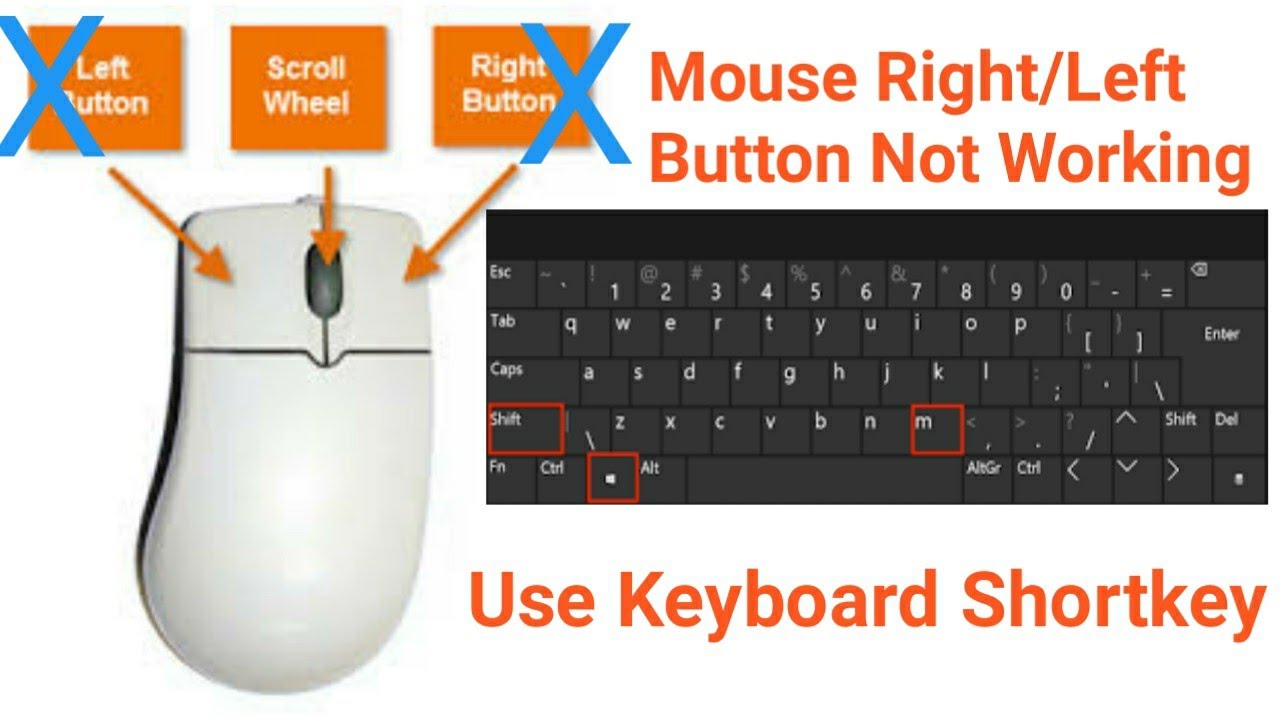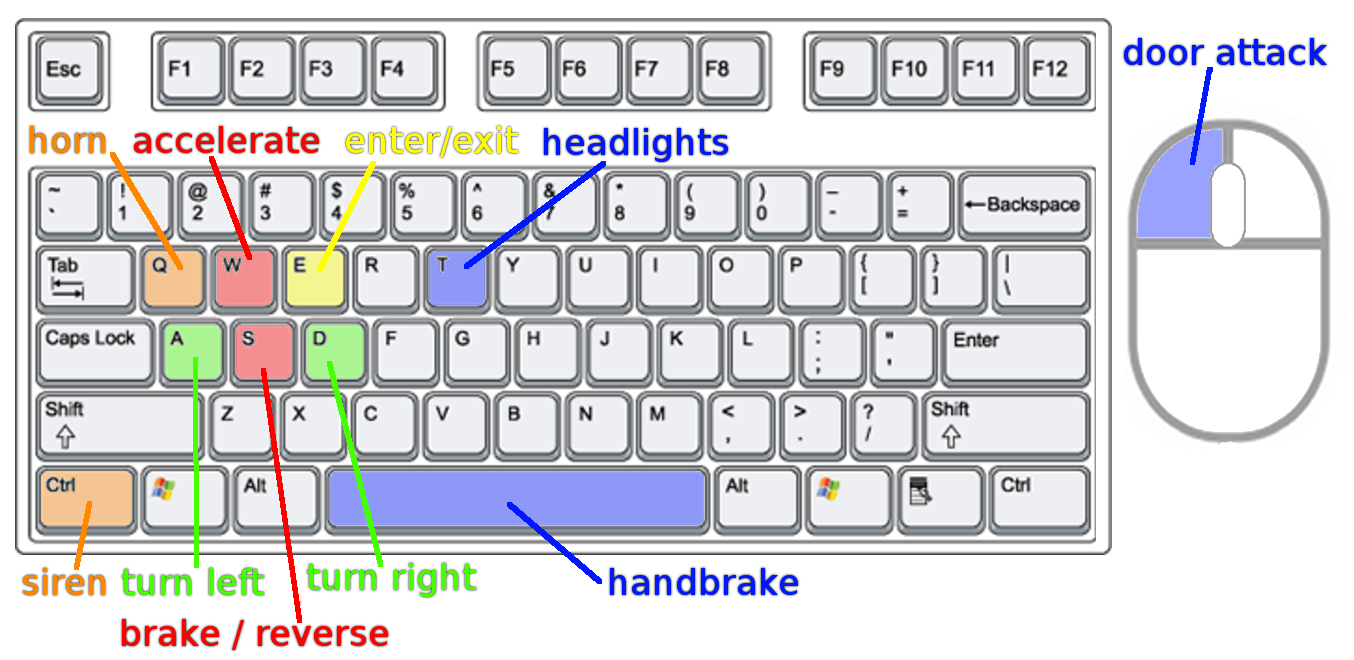Decoding Lmb: An Insightful Guide on the Left Mouse Button on the Keyboard
Introduction
In the digital world, the keyboard and mouse are indispensable tools. They serve as a bridge connecting humans and their digital devices. Among many keys and buttons, one distinct element that holds a crucial role is the Left Mouse Button (LMB). Do we know enough about it in everyday usage? Do we know what to do when the LMB on the keyboard doesn't work? This guide is here to decode all there is about the LMB on the keyboard and its significant role in everyday computing.
What is LMB on a Keyboard?
In the landscape of digital devices, the Left Mouse Button (LMB) is one of the most commonly used interactive elements. Installed on the left side of a mouse, it is our key to the treasures of the digital world. Here's a condensed lowdown on LMB:
- Definition: LMB stands for "Left Mouse Button" on a digital device's mouse.
- Placement: The LMB is conventionally placed on the left portion of the mouse, easily accessible for primary clicking actions.
- Functioning: It aids interaction with digital content displayed on the device screen. Activities such as clicking, double-clicking, or dragging are performed via the LMB. It acts as a conductor between the user and the system, triggering responses based on specific actions.
- Importance: The LMB is vital to computing activities from simple tasks like selecting text to more complex ones like opening an application. Without the LMB, navigating through our digital screens would indeed be a daunting task.
Why Does the LMB on the Keyboard Hold Crucial Significance?
The significance of the Left Mouse Button (LMB) fails to remain unnoticed in the realm of computing. Its crucial role stems from various factors:
- Primary Tool for Selection and Activation: The fundamental role of the LMB is to select and activate options on a screen. This basic function governs the way we interact with our digital devices.
- Foundation of User Interface Designs: The interface designs of many software applications are built around the primary function of the LMB. As a result, the LMB has a significant influence on User Experience (UX) principles.
- Necessity for Basic Operations: From clicking to open files, dragging objects or highlighting text, the LMB aids in the completion of basic computer operations. Without it, interacting with digital devices would be far more complex.
- Frequent Usage: The LMB is used multiple times during a typical computer session, owing to its basic yet vital functionality. This underlines its importance in everyday tasks.
- Advanced Functions: Beyond basic clicking and selecting, the LMB can perform multiple advanced tasks. These include activating special controls in software or games, performing specific actions in combination with keyboard commands, and more.
To summarize, the importance of the LMB is irrefutable. It's a succinct, under-recognized champion of the computing world. Unassuming yet potent, the LMB on the keyboard carries an essential role in digital navigation and interaction.
What are Some Common Uses of LMB in Everyday Computing?
When observing the daily interactions with our digital devices, it's astonishingly apparent how much the Left Mouse Button (LMB) contributes to these processes. Let's unpack some of the common ways the LMB aids in navigating the digital landscape.
- Selection via Clicking: The most basic yet significant functionality of the LMB is clicking. Simply point to and click on any icon or option on your screen with the LMB to select it. This action is the foundation of practically all digital interactions.
- Accessing Applications with Double-Clicks: Next up is double-clicking, another common use of the LMB. By swiftly clicking the LMB twice, you can open applications or files, essentially acting as keys to various digital doors.
- Moving Items through Dragging: An invaluable feature that the LMB offers is the ability to drag and move items on the screen. Simply press and hold the LMB on the chosen item, then drag it across the screen to the desired location.
- Scrolling with LMB Support: In combination with the scroll wheel situated between the left and the right mouse buttons, you can effortlessly scroll through pages. Holding down the LMB while scrolling often provides smoother navigation.
- Emulating Right-Click: Interestingly, on devices or systems without a right mouse button, the LMB can step in. By pressing and holding the LMB, it emulates a right mouse click, offering access to context-specific menus.
In essence, the LMB is the multi-faceted magic wand of our digital world, facilitating an array of actions that make our digital interactions smooth and efficient. These examples reflect just a fraction of the LMB's potential, showcasing its fundamental role in everyday computing.
Advanced Functions of LMB: What Shortcuts and Hidden Features Does It Harbor?
Despite its mostly unassuming presence, the Left Mouse Button (LMB) nurtures a host of advanced features that provide comprehensive, multifaceted functionality in the ever-evolving digital landscape. Many of these features are considerably helpful shortcuts and hidden capabilities that can elevate your computing efficiency and productivity.
Here are some powerful features that you can unlock with the LMB:
1) Multiple Selections through Dragging: Beyond single-click selections, the LMB allows you to drag over a group of files or a body of text for a mass selection. This ability is tremendously valuable when dealing with a large chunk of data or multiple files.
2) Selective Clicking with Ctrl+LMB: Want to select specific, non-adjacent items in a list or a document? Just press and hold Ctrl, and with each LMB click, you can pick individual items from a list. It's a handy shortcut, especially when sifting through lengthy content.
3) Sequential Selection with Shift+LMB: Looking to select a series of contiguous items in a list or a document? Simply click on the first item, press and hold Shift, then click on the last item. Everything in between gets selected, a functionality that saves a lot of time in daily computing.
4) Tactile Experiences in Graphic Design: In the world of graphic design or 3D modeling software, the LMB steps up to help with object manipulation and camera control. This multi-purpose capability elevates the precision and efficiency of design tasks.
5) Gaming Utility: Beyond work, LMB even caters to your play. Many games utilize the LMB for game mechanics like shooting, controlling character actions, and navigating through game menus.
From everyday computing to specialized software operations, the LMB, despite its minimalistic design, is a powerhouse of functionality. By taking full advantage of its advanced features, we can enhance our overall digital proficiency and productivity significantly.
Troubleshooting LMB Failures: What Happens When the LMB on the Keyboard Doesn't Work?
The Left Mouse Button (LMB) serves as a vital tool in our daily computer operations. But, what if it stops working? This failure can lead to significant hurdles in accomplishing tasks. Here is an easy guide that will help you identify the problem and navigate through the process of troubleshooting.
Identifying the Problem:
The foremost step is to discern whether the LMB issue is due to software or hardware. This is crucial because your next troubleshooting step depends on it.
Addressing Software-Related Issues:
If you suspect the LMB failure is due to a software glitch, consider these steps:
1. Update Mouse Drivers: It's possible that outdated drivers might be the root cause. Updating them may resolve the issue.
2. Alter Mouse Settings: Try adjusting the mouse settings in the control panel. Opt for 'default settings' if you are unsure about the adjustments.
Tackling Hardware-Related Issues:
A hardware-related problem with the LMB can often be visual. Consider these suggestions:
1. Clean Mouse: Dust or debris can hinder the functionality of your LMB. Give your mouse a good clean-up.
2. Consider Replacing the Mouse: If the problem persists even after cleaning, think about replacing the mouse with a new one.
Alternative Measures:
In situations where a quick fix is required or mouse replacement is not an immediate option, take these steps:
1. Utilize Keyboard Shortcuts: Learn essential keyboard shortcuts to navigate.
2. Switch Mouse Buttons: Temporarily interchange the functions of right and left mouse buttons via settings.
Remember, when in doubt, it's always wise to seek professional help. Troubleshooting hardware can sometimes lead to further complications if not handled properly.

Conclusion
Understanding the left mouse button's various roles and capabilities can enhance our productivity and overall computer navigation experience. Despite its minute size, the LMB plays a massive role in our day-to-day digital activities, making it a fundamental tool in the digital world. Remembering these pointers can be beneficial, especially if you ever face an issue with LMB functionality.

Related FAQs about what is lmb on keyboard
Can a computer function without the Left Mouse Button?
Technically, a computer can function without the Left Mouse Button (LMB), but it would significantly impede your ability to interact with the interface. Many essential tasks such as clicking, selecting, and dragging rely heavily on the LMB. However, you can use alternative methods such as keyboard shortcuts for navigation.
Why is LMB often used more than RMB in many application functions?
The Left Mouse Button (LMB) is frequently used more than the Right Mouse Button (RMB) because it carries out core actions like selecting and clicking. Most software applications and interfaces are designed with LMB as the primary interactive component. On the other hand, RMB functions usually involve supplementary or secondary actions, like opening context menus.
Can I customize the functions of the LMB on my keyboard, and how can I do it?
Yes, you can customize the functions of the LMB on your keyboard. This is typically done through the mouse settings in your computer's control panel. However, customization options may vary depending on your operating system and mouse software. Always refer to the user manual or professional guidance.







